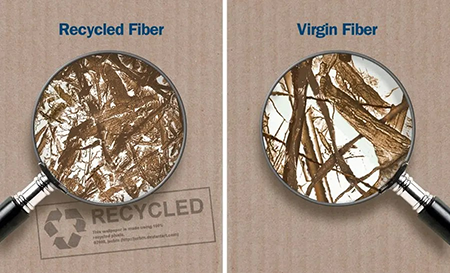In the packaging industry, the substrate of a carton refers to the type of material that the carton you are sealing is made out of. The most common type of substrate is corrugated fiberboard.
Pressure-sensitive tape is characterized by the use of wipe-down force to drive the adhesive into the fibers of the chosen substrate, and differences in adhesive formulation can impact how well it adheres to different substrates.
“Virgin” (non-recycled) corrugate is typically the easiest type of carton substrate for traditional packaging tapes to adhere to. This material is made up of long-strand fibers that are spaced out enough that the tape’s adhesive is able to easily penetrate into the surface and cling to those long fibers that make up the substrate. Most packaging tapes are designed to adhere well to newly manufactured corrugate.
Recycled corrugate, on the other hand, often poses a challenge for case sealing, as the fibers are much shorter and packed together due to the nature of the recycling process. This makes it difficult for some packaging tapes to stick because the adhesive is not able to penetrate in between the fibers of the corrugate as easily as it would in virgin corrugate. To work around this, there are packaging tapes available that are designed with this challenge in mind and are formulated with an adhesive that is able to stick well to highly or 100% recycled corrugated material.
Post time: Jun-14-2023






